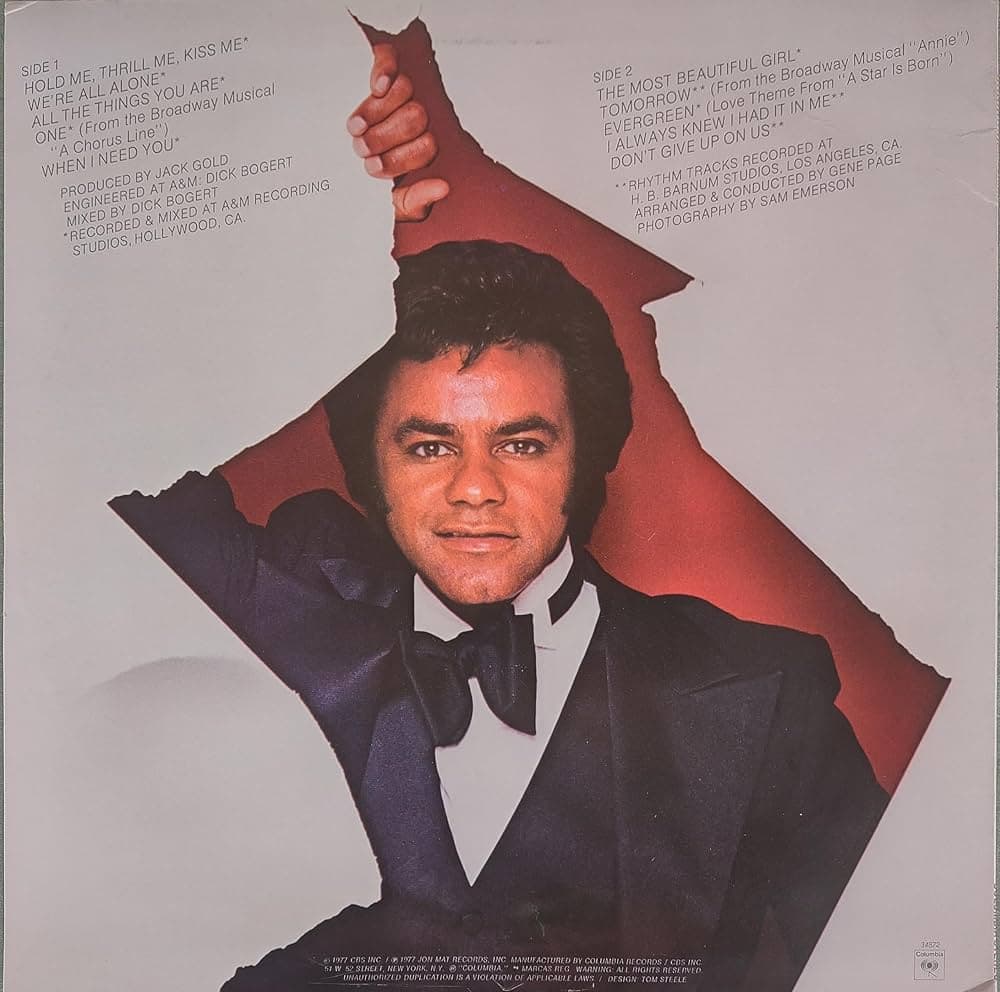
The Velveteen Voice: The Timeless Embrace of a Classic Ballad
There are certain songs, woven into the very fabric of our collective memory, that instantly transport us back to a simpler, perhaps more intensely romantic time. For many of us, that feeling is irrevocably linked to the sublime, soaring voice of Johnny Mathis, and few recordings capture the essence of his classic style better than his 1977 version of “Hold Me, Thrill Me, Kiss Me.”
While the song itself is a cherished standard, penned by Harry Noble in 1952 and first hitting the charts for Karen Chandler that year (and later becoming a major hit for Mel Carter in 1965, peaking at US Pop #8 and US Adult Contemporary #1), it’s Mathis’s lush, silken interpretation that resonates with an almost cinematic nostalgia. His version wasn’t released as a standalone single, but anchored his 1977 album, also titled Hold Me, Thrill Me, Kiss Me. This album, a masterclass in elegant, late-70s Pop Vocal, was warmly received, even bubbling under the main Billboard Top LPs & Tapes chart—a testament to the enduring appeal of his sound even as disco and punk dominated the airwaves.
The story behind this particular recording is less about dramatic personal upheaval and more about the simple, profound magic of a timeless performer meeting a timeless song. By 1977, Johnny Mathis was already a living legend, his career built on an immaculate blend of jazz sensibilities, popular music, and Broadway standards. For the Hold Me, Thrill Me, Kiss Me album, he worked with arranger and conductor Gene Page and producer Jack Gold to update these classics for a new generation, adding a subtle, sophisticated sheen that elevated the track from a doo-wop-era number to a grand, orchestral declaration of devotion.
The meaning, of course, is pure, unadulterated longing. The lyrics are a straightforward, tender plea for affection: “Hold me, thrill me, kiss me / Tell me you really love me.” But in the hands of Mathis, with his impeccable breath control and that signature, three-octave vocal range, the simple words become an emotional event. It’s not a request; it’s a soul-deep necessity. His voice glides over the melody like velvet, turning the standard into the definitive slow-dance song—a staple of countless high school proms, wedding receptions, and quiet evenings by the fire. It’s the sound of a generation connecting their own personal dramas of the heart to a perfect, universal melody.
For those of us who recall the late seventies, this song conjures the image of a dimly lit room, perhaps a turntable spinning and the needle dropping onto the smooth grooves of a Columbia vinyl. It’s a memory infused with the scent of cheap cologne and the nervous flutter of a first embrace. The arrangement on the Mathis version, particularly the sweep of the strings and the gentle swell of the backing vocals, doesn’t just provide a backdrop; it provides the mood. It is elegance incarnate, a powerful reminder that even amidst the sonic experimentation of the era, the timeless art of the ballad, delivered by a true master like Johnny Mathis, would always have a place in the hearts of those who truly knew how to love a song.